Text
The Booming Male Skin Care Market Size, Share, Growth and Market Trends
Gone are the days when male skin care routines consisted of a bar of soap and a splash of aftershave. Today, men are increasingly prioritizing their appearance and well-being, leading to a surge in the male skin care market. Let's delve into this dynamic market, exploring its impressive size, promising growth trajectory, and the segmentation that caters to the evolving needs of the modern man.

A Market on the Rise:
The male skin care market is experiencing phenomenal growth. It's estimated to be valued at a staggering $17.9 billion in 2022, and this figure is projected to climb steadily, reaching an impressive $21.74 billion by 2030. This translates to a Compound Annual Growth Rate (CAGR) exceeding 5%, highlighting the growing importance men place on taking care of their skin.
Market Share & Players:
The market share is witnessing a fascinating shift:
Traditional Players: Established companies like Procter & Gamble and Unilever are expanding their offerings beyond shaving products to include moisturizers, serums, and anti-aging solutions for men.
Premium Brands: Luxury brands are recognizing the potential of this market, offering high-end skincare lines specifically formulated for men's tougher skin.
Direct-to-Consumer (DTC) Startups: Innovative startups are disrupting the space by offering personalized subscriptions, targeted solutions, and a focus on natural ingredients, appealing to a younger, tech-savvy demographic.
Segmenting the Male Skin Care Market:
This market caters to a diverse range of needs and preferences through various product segments:
Basic Essentials: Cleansers, moisturizers, and sunscreens form the foundation of a male skincare routine, addressing basic concerns like dryness and irritation.
Anti-Aging Solutions: Products focused on reducing wrinkles, fine lines, and dark circles cater to a growing desire for a youthful appearance.
Beard Care: Specialized products for beard growth, maintenance, and styling are gaining significant traction.
Problem-Specific Solutions: Products address specific concerns like acne, oily skin, and ingrown hairs, offering targeted solutions for a healthy complexion.
Beyond the Surface: What Drives the Growth?
Several factors contribute to the male skin care market's impressive growth:
Shifting Social Norms: Traditional masculinity is being redefined, with men becoming more comfortable embracing self-care and prioritizing a healthy appearance.
Increased Awareness: Men are bombarded with media portraying flawless skin, leading to a heightened awareness of the importance of proper skincare routines.
Focus on Overall Health: The link between skincare and overall well-being is becoming increasingly recognized, prompting men to invest in their skin health.
The Future of Male Skin Care:
The male skin care market promises exciting developments:
Personalization: Expect a rise in customized products and regimens tailored to individual skin types and concerns.
Focus on Ingredients: Natural and organic ingredients will be even more sought-after, along with innovative formulations to address specific needs.
Technological Advancements: We may see the rise of smart skincare devices and apps that analyze skin health and recommend personalized routines.
Conclusion:
The male skin care market is no longer a niche segment. It's a thriving industry with a promising future. As men prioritize their well-being and embrace self-care, expect a wider range of innovative products and targeted solutions catering to every skin type and concern.
#Men skin care market#skin care market#skin care industry market#cosmetics industry#market research report
0 notes
Text
Analysis of Oral Care Industry Players and Market Demand
Maintaining a healthy smile is no longer just about vanity; it's a well-being essential. This growing awareness is fueling a dynamic oral care industry. Today, we'll dissect the key players shaping this market, analyzing their market share, size, and how they cater to evolving consumer demands.

Global Goliaths: Leading the Charge
Procter & Gamble (Market Share: ~25%): A titan in the industry, P&G boasts a vast oral care portfolio under brands like Crest, Oral-B, and Rembrandt. They cater to diverse needs – from mass-market appeal to premium offerings – and invest heavily in research and development, keeping them at the forefront of innovation (think: electric toothbrushes with pressure sensors).
Colgate-Palmolive (Market Share: ~20%): Another giant, Colgate-Palmolive offers a comprehensive range of products under its namesake brand, along with Tom's of Maine for the natural segment. Their global reach and brand recognition make them a household name in oral care.
Unilever (Market Share: ~10%): A major player with brands like Close-Up and Pepsodent, Unilever focuses on affordability and caters to a broad consumer base. They adapt their offerings to regional preferences, maintaining a strong presence in developing markets.
Regional Powerhouses: Niche Domination
While global giants hold significant sway, regional players carve their own paths:
Lion Corporation (Market Share: ~5% in Asia Pacific): A Japanese powerhouse with a strong presence in Southeast Asia, Lion focuses on innovation and technology. They offer unique products like medicated toothpastes and innovative toothbrushes, catering to specific regional demands for oral health solutions.
Dabur (Market Share: ~5% in Asia Pacific): An Indian giant, Dabur capitalizes on the growing popularity of Ayurvedic medicine. They offer herbal toothpastes and mouthwashes, catering to a demand for natural and traditional oral care solutions within the region.
Innovation Instigators: Disrupting the Landscape
Beyond established players, exciting startups are shaking things up:
Hello Products (Market Share: ~1% globally): This brand focuses on natural ingredients and transparency, offering fluoride-free and vegan toothpaste options. They cater to the growing demand for clean beauty and personalized oral care solutions with a focus on natural ingredients.
Quip (Market Share: Emerging): This subscription-based company offers sleek electric toothbrushes and toothpaste refills delivered directly to consumers. They cater to a millennial and Gen Z audience seeking convenient and stylish oral care solutions.
Market Demands: A Song of Two Sides
The industry caters to both high and low-demand segments:
High Demand: Premium electric toothbrushes, whitening products, and specialized oral care solutions for sensitive teeth or gum problems see high demand, driven by a growing focus on preventive care and aesthetics.
Low Demand: Basic manual toothbrushes and generic toothpastes experience lower demand in developed markets due to rising disposable income and a shift towards premium and specialized products. However, these basic products still maintain a strong presence in developing markets where affordability remains a key concern.
The Future of Oral Care: Collaboration and Innovation
The oral care industry is a fascinating landscape where established players and innovative startups co-exist. As consumer demands evolve towards personalization, sustainability, and tech integration, we can expect further collaboration and exciting new product offerings.
#oral care market#oral care market research report#oral care#oral care industry#oral care marke#oral care industry growth#market research#market research report
0 notes
Text
Nail Polish Industry Size, Share and Future to 2025
Nail polish has transcended its functional purpose of protecting nails. It's become a vibrant art form, a statement of self-expression, and a multi-billion dollar industry. Let's delve into the world of nail polish, exploring its market size, growth trends, and the hottest styles shaping the future of this colorful landscape.
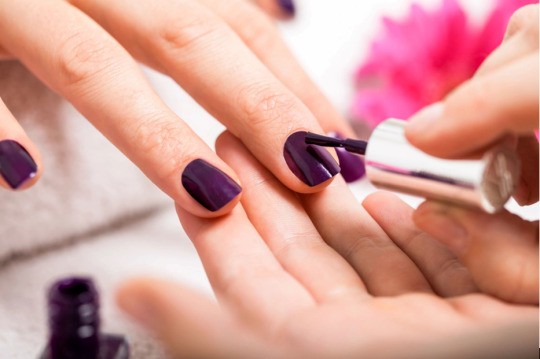
A Global Industry with Glossy Prospects
The global nail polish industry is a powerhouse, estimated to reach a staggering USD 21.4 billion by 2025. This growth is fueled by several key factors:
Rising Disposable Income: As economic prosperity increases, people have more money to invest in personal care, including nail polishes.
Social Media Influence: Platforms like Instagram and Pinterest showcase creative nail art designs, inspiring trends and driving demand for new colors and finishes.
Focus on Self-Care: Manicures and nail art are increasingly seen as a form of self-care, offering a moment of relaxation and pampering.
Evolving Color Palettes and Textures: Brands are constantly innovating with new color trends, finishes like matte and chrome, and special effects like glitter and holographics, catering to a diverse range of preferences.
Market Share and Regional Variations
North America and Europe hold the largest share of the nail polish market, followed by the Asia Pacific region. However, the Asia Pacific region is experiencing the fastest growth due to a burgeoning middle class with increasing disposable income. Here's a breakdown of the estimated regional market share:
North America: 35%
Europe: 30%
Asia Pacific: 20%
Rest of the World: 15%
Beyond the Basics: Trends Stealing the Spotlight
The nail polish industry thrives on constant innovation and trendsetting. Here are some of the hottest styles captivating nail enthusiasts:
Nude with a Twist: Neutral tones remain popular, but with a dash of shimmer, glitter, or metallic accents for added flair.
Minimalist Chic: Clean lines, negative space designs, and single accent nails offer a sophisticated aesthetic.
The Power of Color: From vibrant brights to deep, dramatic hues, color remains a key aspect of nail trends, allowing for self-expression.
Nail Art Extravaganza: Geometric patterns, intricate designs, and 3D embellishments are gaining traction for those who love a bold statement-making look.
Sustainability: A Growing Concern
The nail polish industry is starting to address the growing consumer demand for sustainable practices:
Vegan and Cruelty-Free Products: Consumers are increasingly seeking nail polishes free of animal-derived ingredients and not tested on animals.
Eco-Friendly Packaging: Brands are exploring ways to reduce waste by using recycled or recyclable packaging materials.
Non-Toxic Formulas: The development of safer nail polishes free of harsh chemicals like formaldehyde and toluene is gaining traction.
The Future of Nail Polish: A Bright and Colorful Outlook
The nail polish industry future is poised for continued growth, fueled by consumer demand for self-expression, innovation in color and finishes, and a growing focus on sustainability. Here's what to expect:
Personalization: Nail polish brands might offer customizable shades and finishes to cater to individual preferences.
Direct-to-Consumer (D2C) Sales: More online retailers and brands might offer D2C options, providing a wider range of colors and niche products directly to consumers.
Tech-Enabled Experiences: Augmented reality (AR) apps could allow consumers to virtually try on nail polish colors before buying.
#nail market#nail industry#nail polish market#nail polish industry#nail market research report#market research#cosmetics industry
0 notes
Text
Green and Growing: Unveiling the Organic Personal Care Market's Revenue Revolution
The personal care industry is undergoing a metamorphosis. Consumers are ditching chemical-laden products and embracing natural alternatives, fueling the rise of the organic personal care market. This flourishing industry is witnessing a revenue revolution, blossoming into a multi-billion dollar space. But what's driving this green wave, and what does the future hold for organic personal care revenue? Let's delve into the financial fertile ground of this market and explore the factors propelling its impressive growth.
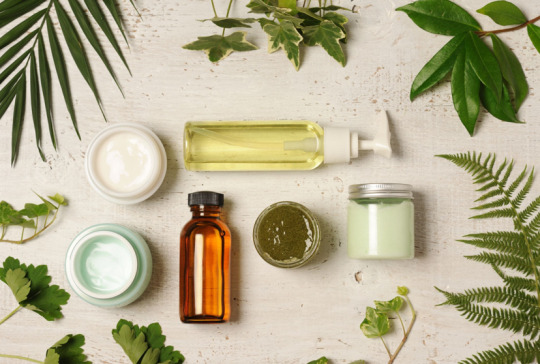
Blooming with Greenbacks: Market Size and Growth Trajectory
The organic personal care market is a verdant landscape, currently valued at an estimated USD 11.5 billion globally (as of 2023). This impressive figure is just the beginning! By 2030, the market is expected to reach a staggering USD 21.2 billion, reflecting a robust Compound Annual Growth Rate (CAGR) of 9.8%. This translates to a significant increase in revenue for brands operating in this space.
What's Driving the Revenue Revolution?
Several key factors are contributing to the organic personal care market's revenue surge:
Rising Health & Wellness Consciousness: People are prioritizing healthy living, and organic personal care products are seen as a way to achieve holistic well-being. Consumers are willing to pay a premium for products perceived as safer and gentler on their skin.
The "Clean Beauty" Movement: Consumers are increasingly wary of chemicals in conventional cosmetics. This shift in consumer behavior is driving demand for organic alternatives, leading to a rise in revenue for brands catering to this segment.
Growing Disposable Incomes: As purchasing power increases, consumers have more money to invest in premium personal care products. This translates to a larger pool of potential customers willing to spend on organic options.
Social Media Influence: The rise of social media influencers promoting organic beauty products is fueling awareness and interest among consumers. This influencer marketing translates to increased brand recognition and ultimately, higher revenue.
Beyond the Surface: Product Diversification and Revenue Streams
The organic personal care market isn't a one-trick pony. The revenue revolution is fueled by a diverse product range:
Skincare: From nourishing cleansers and moisturizers to potent serums and masks, organic options are experiencing significant growth, generating considerable revenue for brands.
Haircare: Gentle shampoos, conditioners, and hair treatments formulated with botanical ingredients are gaining traction, contributing to the overall market revenue.
Cosmetics: Makeup products free from harsh chemicals and artificial colors are becoming increasingly popular, creating a new revenue stream for organic brands.
Men's Grooming: The organic personal care market is expanding to include men's skincare and haircare products, opening doors to new customer segments and revenue opportunities.
Baby Care: Safe and gentle organic baby products like lotions, wipes, and soaps are a popular choice for parents, generating consistent revenue for brands in this niche.
The Green Bottom Line: Sustainability and Ethical Practices
Consumers are not just concerned with organic ingredients; they also prioritize sustainability and ethical practices. Here's how these values are shaping the future of organic personal care revenue:
Transparency: Consumers value brands that are honest about their ingredients and production processes. This transparency fosters trust and can lead to increased revenue through customer loyalty.
Ethical Sourcing: Sourcing ingredients from sustainable and ethical sources is a growing priority. By demonstrating ethical practices, brands can attract environmentally conscious consumers, boosting their revenue potential.
Eco-friendly Packaging: Brands are embracing recyclable and biodegradable packaging materials to minimize environmental impact. While the upfront cost of eco-friendly packaging might be higher, it can attract a wider customer base and potentially lead to higher long-term revenue.
The Future is Bright: Innovation and Revenue Potential
The organic personal care market is constantly innovating, creating exciting new revenue streams:
Tech-Driven Personalization: AI-powered recommendations and personalized product formulations based on individual needs and skin types can create targeted marketing strategies and potentially increase revenue.
Advanced Natural Ingredients: Research into the properties of new plant-based ingredients with powerful benefits can lead to the development of innovative products, generating new revenue streams.
Subscription Services: Subscription boxes offering curated organic personal care products are gaining popularity, creating a recurring revenue model for brands.
A Green Revolution in Personal Care
With a focus on natural ingredients, sustainability, and ethical practices, the organic personal care market is poised for continued growth and revenue generation. So, whether you're a consumer seeking natural alternatives or a brand looking to cultivate a flourishing future, the organic personal care market offers a lucrative and ever-evolving space.
0 notes
Text
Navigating the Maze: A Guide to Skincare Market Research Reports
The skincare industry is a complex and ever-evolving landscape. Staying ahead of the curve requires not just intuition, but also data-driven insights. This is where skincare market research reports come in – powerful tools that can equip you with the knowledge to make informed decisions and achieve success.

Why Invest in Skincare Market Research Reports?
Market research reports offer a wealth of benefits for various stakeholders in the skincare industry:
Businesses: Gain insights into market trends, competitor analysis, consumer behavior, and industry forecasts to make strategic decisions regarding product development, marketing campaigns, and pricing strategies.
Investors: Evaluate the potential of the market, identify promising segments, and assess the risks and opportunities associated with investing in the skincare industry.
Entrepreneurs: Conduct market research before launching a new brand or product line to identify target audiences, understand their needs, and assess the competitive landscape.
Consumers: Gain a deeper understanding of the industry, compare product offerings, and make informed purchasing decisions based on data and analysis.
What Do Skincare Market Research Reports Typically Cover?
The specific content of a report can vary depending on the provider and focus area. However, some common elements include:
Market Size and Growth: Data on the current market size and projected growth trajectory for the global and regional skincare markets.
Market Segmentation: Analysis of the market breakdown based on factors like demographics (age, gender), skin type (oily, dry, sensitive), product category (cleansers, moisturizers, serums), and distribution channels (online, offline).
Consumer Trends: Insights into current and emerging consumer preferences regarding natural & organic ingredients, sustainability practices, personalized skincare, and the influence of social media.
Competitive Landscape: Analysis of key industry players, their market share, product portfolios, marketing strategies, and strengths & weaknesses.
Future Outlook: Forecasts on how the market is expected to evolve, including technological advancements, regulatory changes, and potential challenges and opportunities.
Finding the Right Report for You:

With a plethora of market research reports available, choosing the right one can be overwhelming. Here are some tips to guide your search:
Identify Your Needs: Clearly define your goals and what specific information you're seeking.
Consider the Report Provider: Research the reputation and expertise of the market research firm.
Evaluate the Report Scope: Ensure the report covers the geographic regions, product categories, and market segments relevant to your interest.
Check the Publication Date: Opt for recent reports to access the most up-to-date data and insights.
Compare Pricing: Market research reports can vary significantly in cost.
Beyond the Report: Additional Resources
Market research reports are a valuable starting point, but they shouldn't be the only source of information. Here are some additional resources to consider:
Industry Publications: Trade magazines and industry newsletters offer insights and news on the latest trends.
Government Reports: Government agencies often publish data on consumer spending and market size.
Industry Events: Attending conferences and trade shows allows you to connect with industry professionals and gather firsthand information.
The Final Note: Knowledge is Power
The Skincare market research reports are powerful tools that can illuminate the path to success in this dynamic industry. By using them effectively, you can gain valuable insights into consumer behavior, emerging trends, and the competitive landscape.
#Skin care market#skincare industry#skincare market size#Skincare#skin care products#cosmetics industry
0 notes
Text
Indian Herbal Cosmetics Market Future Trends (2023-2030)
India has embraced the power of natural ingredients in its beauty rituals. Today, this tradition is flourishing in the booming Indian herbal cosmetics market. From Ayurvedic remedies to botanical blends, this market offers a healthy and conscious alternative to conventional cosmetics. In this blog, we'll delve into the market size, growth projections, key trends, and the factors propelling this natural wave in the Indian beauty industry.
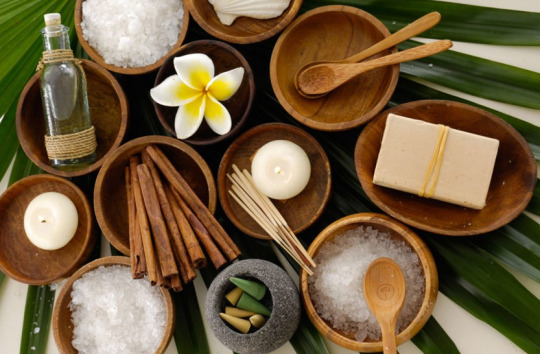
Indian Herbal Cosmetics Market Size and Growth Drive
The Indian herbal cosmetics market is a flourishing industry, estimated to reach a staggering USD 1.5 billion by 2024, and projected to grow even further to USD 3.2 billion by 2029, reflecting a robust CAGR of 13.8%. This growth is fueled by several key factors:
Rising Disposable Incomes: As disposable incomes rise, Indian consumers are increasingly willing to invest in premium and natural beauty products.
Growing Awareness of Sustainability: Eco-conscious consumers are seeking natural and organic alternatives to synthetic cosmetics, concerned about the environmental impact of the beauty industry.
Ayurvedic Legacy: India's rich history of Ayurveda, a traditional system of medicine, has instilled a deep trust in the efficacy of natural ingredients for beauty purposes.
Safety Concerns: Concerns about the potential health risks associated with some conventional cosmetic ingredients are driving consumers towards natural options perceived as safer.
Indian Herbal Cosmetics Market Segmentation
The Indian herbal cosmetics market caters to a diverse range of beauty needs with distinct product categories:
Skincare: This is the largest segment, encompassing herbal cleansers, moisturizers, sunscreens, and anti-aging creams formulated with botanical extracts and essential oils.
Haircare: Herbal shampoos, conditioners, and hair oils made with natural ingredients like amla, shikakai, and bhringraj are gaining popularity for promoting healthy hair growth and nourishment.
Makeup: Mineral makeup free from harsh chemicals and artificial colors is trending, offering a natural and healthy way to enhance features.
Men's Grooming: The market for herbal men's grooming products like beard oils and face washes is witnessing significant growth, catering to a growing segment of beauty-conscious men.
Future Trends Indian Herbal Cosmetics Market (2023-2030)
Several key trends will significantly impact the Indian herbal cosmetics market in the coming years:
Focus on Organic and Ayurvedic Ingredients: Consumers will increasingly seek products formulated with certified organic ingredients and those that draw inspiration from traditional Ayurvedic practices.
Rise of Natural and Sustainable Packaging: Brands will prioritize eco-friendly packaging solutions to reduce their environmental footprint and resonate with sustainability-conscious consumers.
E-commerce Boom: Online platforms will likely become the preferred shopping destination for herbal cosmetics, offering convenience and wider product selections.
Demand for Transparency and Ethical Sourcing: Consumers will demand greater transparency from brands regarding ingredient sourcing and ethical production practices.
Focus on Regional Ingredients: Local and indigenous ingredients specific to different regions of India might gain traction, promoting a more diverse product offering.
The Natural Advantage: A Market Poised for Growth
The Indian herbal cosmetics market presents a lucrative opportunity for businesses that can cater to the growing demand for natural, safe, and effective beauty products. By understanding the market trends, segmentation, and consumer preferences, brands can develop innovative products that harness the power of nature's bounty while adhering to sustainable practices. As the future unfolds, the Indian herbal cosmetics market is poised to bloom further, offering consumers a healthy and conscious approach to beauty.
#Herbal Cosmetics Market in India#Ayurveda Herbal Cosmetics Market#Chemicals Cosmetics Market#Herbal Cosmetics Market Size
0 notes
Text
Trends Shaping the Cosmetic Procedures Industry (2023-2030)
The desire to look and feel our best has always been a human pursuit, and the cosmetic procedures industry has become a major player in fulfilling that desire. Buckle up, beauty enthusiasts, because we're about to explore the fascinating trends shaping the future of cosmetic procedures (2023-2030).

Minimally Invasive, Maximally Effective
Gone are the days of lengthy recovery times and dramatic scars. Patients are increasingly seeking minimally invasive procedures (MIPs) that offer faster results and a quicker return to normal life. Statistics show this trend is here to stay, with the global minimally invasive aesthetics market expected to reach a staggering USD 12.3 billion by 2028, reflecting a growth rate of 8.2%. Procedures like thread lifts, filler injections, and laser treatments are becoming the new norm, driven by:
Advancements in Technology: New tools and techniques are making MIPs even more precise and effective, offering targeted results with minimal downtime.
Shifting Priorities: Today's busy lifestyles demand quicker recovery times. MIPs cater to this need, allowing patients to get back to their daily routines faster.
Natural-Looking Results: The emphasis is on subtle enhancements rather than drastic transformations. MIPs are ideal for achieving this desired outcome.
Tech Takes Center Stage: AI, Robotics, and Beyond
The future of cosmetic procedures industry is intertwined with technological advancements. Here's a glimpse of what's to come:
Artificial Intelligence (AI): Imagine AI-powered consultations that personalize treatment plans and predict potential outcomes. This level of customization is on the horizon, with AI poised to revolutionize patient experiences.
Robotic Assistance: Robotic surgical systems are already used in some procedures, offering enhanced precision and minimal tremor. Expect to see further integration of robotics, leading to even greater accuracy and potentially shorter surgery times.
3D Printing: The ability to 3D print customized implants or prosthetics could personalize cosmetic procedures even further, creating a truly bespoke experience.
Natural Beauty Takes the Lead
Dramatic transformations are giving way to a subtler approach. The future of cosmetic procedures is all about achieving natural-looking enhancements that accentuate one's natural features. This trend is fueled by:
Shifting Social Norms: The focus is on looking one's best version, not a completely altered version.
Rise of Social Media Filters: Constant exposure to filtered images might be creating a disconnect from reality, leading to a desire for more natural-looking results.
Focus on Preventative Care: Early intervention with minimally invasive procedures can help maintain a youthful appearance for longer, promoting a more natural aging process.
Globalization of Beauty: Medical Tourism Booms
The world is your oyster when it comes to cosmetic procedures industry. Medical tourism is on the rise, with patients seeking cost-effective, high-quality procedures in different countries. This trend presents both opportunities and challenges:
Increased Competition: Countries with established medical tourism industries will need to innovate and offer unique value propositions to attract patients.
Focus on Ethical Practices: As medical tourism grows, ensuring ethical practices, patient safety, and proper regulation will be crucial for maintaining trust and market stability.
The Rise of the Male Market
Men are increasingly embracing cosmetic procedures industry to enhance their appearance and boost confidence. Studies show that the global market for male cosmetic procedures is expected to reach USD 21.7 billion by 2027, reflecting a growth rate of 8.5%. This trend can be attributed to:
Breaking Gender Stereotypes: Societal stigmas surrounding male cosmetic procedures are fading, leading to greater acceptance and openness.
Focus on Overall Wellness: Men are becoming more invested in their overall well-being, which includes taking care of their appearance.
Increased Availability of Procedures: The market is expanding to cater to the specific needs of male patients.
#Cosmetic procedures market#Cosmetic procedures market size#Cosmetic procedures market segmentation#Cosmetic procedures market Trends#Cosmetic procedures market Growth
0 notes
Text
Hair Care Market of Growth, Revenue and Innovation
The hair care market, far from being a frivolous industry, is a multi-billion-dollar behemoth with impressive growth potential. Whether you crave cascading curls or a healthy scalp, your quest for luscious locks contributes to this significant sector.
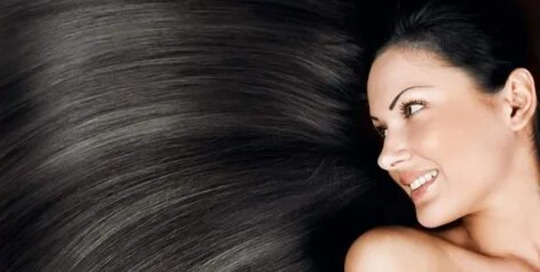
Hair Care Market Revenue and Its Trajectory
The global hair care market is a powerhouse. Estimates suggest a value ranging from a substantial USD 90.59 billion in 2024 to a remarkable USD 99.52 billion in 2023. This signifies a massive volume of shampoos, conditioners, and styling products being used worldwide.
But the truly exciting news lies in the market's projected trajectory. Analysts anticipate continued growth, with a Compound Annual Growth Rate (CAGR) ranging from a steady 3.66% to a dynamic 10.4%. This translates to an expected market value reaching anywhere between USD 108.43 billion by 2029 and a staggering USD 213.47 billion by 2032. That's a significant chunk of change illustrating our global obsession with keeping our hair looking its best.
A Multifaceted Force Fueling the Growth
Several key trends are acting as wind beneath the wings of this hair care industry boom:
The Rise of the Haircare-Conscious Consumer: Gone are the days of a quick lather-rinse-repeat routine. Today's consumers are prioritizing healthy hair, leading to a surge in demand for specialized products that address concerns like dandruff, breakage, or hair loss. This focus on hair health transcends gender and cultural boundaries, with men increasingly seeking out targeted solutions for their specific needs.
The Allure of Natural and Organic Ingredients: The "clean beauty" movement has extended its reach to hair care, with consumers seeking products free from harsh chemicals and packed with natural and organic ingredients. This shift reflects a growing awareness of the potential health benefits associated with natural ingredients and a desire for products that are gentle on the scalp and hair.
A Revolution in How We Shop for Hair Care: The rise of online shopping and direct-to-consumer brands has revolutionized access to hair care products. No longer are consumers limited to drugstore aisles. Now, they can discover niche brands and personalized routines with just a few clicks. Convenience and access to a wider variety of products are fueling this e-commerce boom, particularly with younger generations who are digital natives.
The Power of Emerging Markets: As disposable incomes rise in developing nations, the demand for hair care products is expected to climb significantly. This influx of new consumers will further propel the market's growth. Increased urbanization and a growing middle class with more disposable income will create a fertile ground for hair care brands to expand their reach.
A Look Ahead: The Future of Hair is Bright (and Personalized)
The future of hair care market appears bright and brimming with innovation. Here's a glimpse of what's to come:
Hyper-Personalization: Imagine products meticulously formulated to address your unique hair type and specific concerns. Advanced hair diagnostics, perhaps through smart mirrors or specialized apps, will analyze factors like scalp health, hair porosity, and strand thickness. Based on this data, customized formulations will be created to deliver targeted solutions. This level of personalization will ensure consumers achieve their unique hair goals.
Tech Takes a Strand: Smart hairbrushes and apps that analyze your hair's health and recommend personalized product routines will be at our fingertips. These technological advancements will not only provide valuable insights into hair health but also streamline the product selection process, making it easier than ever to find the perfect products for your hair.
Sustainability Takes Root: Eco-friendly packaging and formulations that prioritize environmental responsibility will be at the forefront, allowing us to achieve gorgeous hair without sacrificing the planet. Brands will embrace refillable containers, recycled materials, and water-efficient formulas to minimize their environmental impact. This focus on sustainability reflects a growing consumer consciousness and a desire for products that align with their values.
In conclusion, reaching for your favorite shampoo isn't just a personal act of self-care, it's a contribution to a thriving global industry. With the hair care market demonstrating continuous growth and a future brimming with exciting new technologies and trends, one thing is certain: the quest for healthy, beautiful hair is here to stay.
#Hair care market#hairstyle#Hair#hair care#Hair care industry#Hair care market size#Hair care market share
0 notes
Text
A Dive into the Personal Accessories Market Size, Share, Trends and Market Segmentation
Personal accessories are more than just embellishments; they’re statements of individuality and expressions of personal style. From the timeless elegance of jewelry to the practical convenience of handbags, the personal accessories market is a thriving global industry. Let’s delve into the statistics, trends, and players shaping this dynamic landscape.

Market Size and Growth: A Booming Industry
Global Market Value: The global personal accessories market is estimated to reach a staggering USD 642.9 billion by 2028, showcasing its substantial size and economic impact.
Growth Trajectory: This flourishing market is projected to reach a significant USD 760.9 billion by 2033, demonstrating a robust CAGR (Compound Annual Growth Rate) of 3.4%.
Market Segmentation: Catering to Diverse Tastes
The personal accessories market caters to a wide range of products and preferences:
Jewelry: This segment reigns supreme, encompassing precious metals, gemstones, fashion jewelry, and costume jewelry.
Handbags and Wallets: Functionality meets style in this segment, offering bags for various occasions and wallets to meet everyday needs.
Watches and Eyewear: From timeless watches to trendy sunglasses, these accessories add a touch of sophistication and practicality.
Belts and Scarves: These versatile pieces can elevate an outfit and add a personal touch.
Headwear and Hats: Offering protection and style, this segment caters to diverse preferences and weather conditions.
Market Trends Shaping the Future:
Several key trends are influencing the personal accessories market:
Sustainability Focus: Consumers are increasingly opting for eco-conscious brands that utilize recycled materials, ethical sourcing, and sustainable production practices.
Personalization and Customization: The desire for unique pieces is driving the demand for personalized jewelry, custom-made bags, and bespoke accessories.
E-commerce Boom: Online platforms are revolutionizing the industry, offering wider product selections, convenience, and personalized recommendations.
Luxury Resale: The popularity of pre-owned luxury goods is rising, driven by affordability, sustainability concerns, and access to vintage treasures.
Influencer Marketing: Social media influencers significantly impact purchasing decisions, shaping trends and promoting specific brands or products.
Market Players: A Diverse Landscape
The personal accessories market features a diverse range of players:
Established Luxury Brands: Iconic names like Cartier, Louis Vuitton, and Chanel hold significant market share, offering high-end jewelry, handbags, and accessories.
Fast-Fashion Brands: Companies like H&M, Zara, and Forever 21 cater to trend-conscious consumers with affordable and stylish accessories.
Emerging Sustainable Brands: Focusing on eco-friendly materials, ethical production, and transparency, these brands cater to a growing segment of environmentally conscious consumers.
Independent Designers and Artisans: Handcrafted and unique pieces by independent designers and artisans are gaining traction, offering a personalized and one-of-a-kind touch.
Looking Ahead: A Market Full of Potential
The personal accessories market presents exciting opportunities for businesses that can adapt to evolving trends and consumer preferences:
Embrace sustainability: Implement eco-friendly practices throughout the supply chain to resonate with environmentally conscious consumers.
Offer personalized experiences: Leverage technology to provide personalized recommendations, create custom-made pieces, or offer engraving and other customization options.
Focus on innovation: Develop new and innovative products that cater to specific needs, utilize cutting-edge materials, or integrate technology.
Embrace digital marketing: Utilize social media effectively and leverage influencer partnerships to reach target audiences and showcase products.
The Final Touch: More Than Just Adornment
The personal accessories market transcends the realm of mere adornment. It’s a reflection of personal style, cultural influences, and evolving trends. By understanding the market size, growth trajectory, segmentation, and key players, businesses can contribute to creating unique and meaningful accessories that resonate with consumers worldwide.
0 notes
Text
Baby Apparel Market Future Outlook

The baby apparel market thrives on the joy of dressing little ones. By understanding the market size, growth trends, segmentation, and key players, businesses can contribute to creating comfortable, stylish, and sustainable clothing for the future generation of trendsetters.
0 notes
Text
Beauty and Personal Care Industry

India’s BPC industry is a vibrant and dynamic space, offering immense potential for businesses that understand the evolving needs and aspirations of Indian consumers. By prioritizing innovation, catering to diverse segments, and embracing sustainable practices, companies can contribute to the continued growth and success of this flourishing market.
#Beauty and Personal Care Industry#Indian Beauty and personal care industry#Beauty and Personal care Market
0 notes
Text
The Flourishing Beauty and Personal Care Industry in India
The beauty and personal care industry in India is experiencing phenomenal growth, driven by a confluence of factors. From a market valued at approximately INR 850.7 crores (USD 105 million) in 2018, it's projected to reach a staggering INR 1,612.9 crores (USD 200 million) by 2026, reflecting a remarkable CAGR (Compound Annual Growth Rate). Let's explore the key statistics, growth catalysts, market trends, and prominent players shaping this vibrant space in the heart of Asia.

Market Size and Growth Trajectory:
Current Value: As mentioned above, the Indian BPC industry boasts a current market size of approximately INR 850.7 crores (USD 105 million).
Growth Drivers: Several factors propel the industry's remarkable growth:
Rising disposable income: Increased spending power allows consumers to invest in a wider range of beauty and personal care products.
Urbanization and changing lifestyles: Busier lifestyles in urban centers fuel demand for convenient and effective BPC products.
Growing awareness of personal care: Increased access to information and media exposure foster a focus on personal grooming and beauty.
E-commerce boom: Online platforms provide wider product selection and accessibility, particularly in Tier 2 and Tier 3 cities.
Market Trends Shaping the Future:

The Natural and Organic Revolution: Indian consumers are increasingly prioritizing natural and organic ingredients like amla, aloe vera, coconut oil, and argan oil, seeking alternatives to chemical-laden products.
Focus on Specific Needs: Brands are developing innovative products that cater to various hair, skin, and body concerns, such as hair fall control, anti-aging solutions, and targeted skincare for different skin types.
Men's Grooming Boom: The men's grooming segment is experiencing rapid growth, with brands offering specialized products tailored to men's needs and preferences.
Rise of Digital Influence: Social media influencers and beauty bloggers significantly impact consumer purchasing decisions, creating a demand for innovative and trendy products.
Market Players: A Mix of Domestic Powerhouses and Global Giants:
The Indian BPC industry is a competitive landscape with both established domestic players and multinational corporations vying for market share:
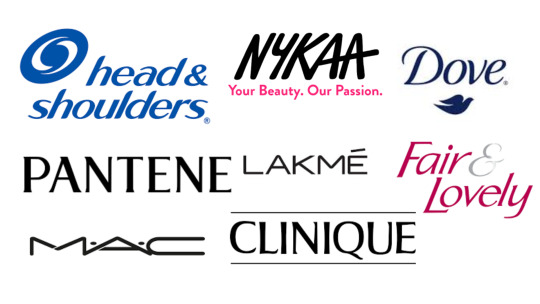
Domestic Powerhouses: Leading Indian brands like Marico (Parachute, Livon), Dabur, Emami, Himalaya Wellness, and Nykaa (a prominent online beauty retailer) hold a significant share in the market.
Global Giants: Established multinational corporations like Unilever (Dove, Sunsilk), L'Oréal, Procter & Gamble, and Estee Lauder also play a crucial role, offering a diverse range of beauty and personal care products.
Key Takeaways for Success in the Indian BPC Market:
Understanding the market dynamics is crucial for businesses aiming to thrive in this dynamic space:
Prioritize Natural Formulations: Develop products that cater to the growing demand for natural and organic ingredients.
Innovation and Specific Solutions: Focus on research and development to create innovative products addressing specific hair, skin, and personal care needs.
Embrace E-commerce: Utilize online platforms to expand reach and cater to a wider audience across India.
Men's Grooming Segment: Develop targeted product lines catering to the expanding men's grooming market.
Leverage Digital Marketing: Utilize social media and influencer marketing to connect with beauty-conscious consumers effectively.
Conclusion:
India's BPC industry presents a compelling picture of growth and vibrancy. By understanding the market size, growth drivers, key players, and evolving trends, businesses can capitalize on the immense potential this market offers. Embracing innovation, prioritizing natural ingredients, and adapting to changing consumer preferences are key strategies to navigate this dynamic and ever-evolving landscape.
#beauty and personal care industry in india#beauty and personal care market#beauty personal care industry#personal care industry growth rate#personal care products industry trends#personal care service industry#personal care products industry#personal care industry analysis#personal care industry growth#personal care industry size#personal care industry in india#personal care industry statistics#personal care ingredients market
0 notes
Text
Hair care products market

The hair care products market is a diverse and ever-evolving space. By understanding market segmentation, analyzing customer preferences, and adapting to changing trends, businesses can unlock new opportunities and thrive in this dynamic industry. The future of hair care belongs to those who can cater to the specific needs and desires of a diverse and ever-evolving consumer base.
#Hair care Products market#Hair care products market analysis#Hair care products market segmentation
0 notes
Text
Flavor and Fragrance Market

The flavor and fragrance industry is well-positioned for continued growth in the coming years. As consumer preferences evolve and new technologies emerge, F&F companies that can adapt to changing trends and focus on innovation will be well-positioned to succeed in this exciting and dynamic market.
#Flavor and Fragrance Industry#Flavor and Fragrance Industry Analysis#Flavor and Fragrance market segmentation#Flavor and Fragrance Industry Report
0 notes
Text
A World of Diverse Tastes and Scents: Exploring Flavor and Fragrance Market Segmentation
The flavor and fragrance industry isn't just about creating delicious and enticing experiences; it's a multi-billion dollar sector with diverse applications and a complex market landscape. Understanding flavor and fragrance market segmentation is crucial for navigating this intricate world, whether you're a consumer seeking the perfect scent or a business aiming to carve your niche.

The Flavorful Landscape: Market Size and Growth
The global F&F market boasts an impressive $30.61 billion in size, and this figure is expected to reach a remarkable $44.6 billion by 2030, driven by several key factors:
Rising disposable income: As economies flourish, consumers have more purchasing power (globally, the average household income is projected to reach $42,250 by 2025 according to [Statista, 2023]), leading to a demand for higher-quality and diverse food and beverage experiences.
Urbanization and convenience: Growing urban populations (56.2% of the global population is expected to be urban by 2050 according to [UN DESA, 2023]) and busier lifestyles fuel the demand for convenient and flavorful food options, increasing the use of flavors in processed foods.
Premiumization: Consumers are increasingly discerning, seeking out high-quality products with unique sensory experiences. This trend fosters the development of specialty flavors and fragrances valued at $16.2 billion in 2023 according to [Grand View Research, 2023].
The natural and organic wave: The growing emphasis on health and wellness propels the demand for natural and organic flavors and fragrances valued at $10.4 billion in 2023 according to [Grand View Research, 2023], prompting companies to adopt sustainable sourcing practices and utilize botanical extracts.
Beyond the Surface: Unveiling Market Segmentation

The F&F industry caters to a wide range of applications, segmented to meet diverse needs and preferences:
Food & Beverages (45% market share): This dominant segment encompasses everything from the fruity flavors in your yogurt to the complex notes in a cup of coffee.
Personal Care & Cosmetics (30% market share): Fragrances play a central role here, influencing the scent profiles of perfumes, lotions, and various other personal care products.
Pharmaceuticals (10% market share): Flavors are often used in medicines, particularly for children, to make them more palatable and encourage treatment adherence.
Industrial Applications (15% market share): Fragrances are not limited to personal care products; they are also present in household cleaning supplies, air fresheners, and even industrial lubricants.
Segmenting by Demographics and Preferences:

Further segmentation goes beyond just application:
Age: Different age groups have varying preferences. Children might enjoy sweet and fruity flavors, while adults might prefer more complex and sophisticated scents.
Geographic location: Cultural preferences and dietary restrictions influence demand. Spicy flavors might be more popular in Asia, while natural and organic options are gaining traction globally.
Lifestyle and health concerns: Consumers with specific dietary needs, such as vegan or gluten-free, require specialized options. Additionally, the rise of sugar-free and low-calorie products impacts flavor profiles.
Understanding the Competitive Landscape:
The F&F industry is a diverse landscape with established players and niche players:
Global giants: Companies like Firmenich, Givaudan, and IFF hold significant market share, offering a wide range of flavors and fragrances across different applications.
Regional players: These companies cater to specific regional preferences and have a strong presence in their local markets.
Niche players: Businesses focusing on specific segments like natural and organic flavors, functional fragrances, or personalized scent solutions are gaining traction.
Navigating the Future: Embracing Innovation and Sustainability
As the F&F industry evolves, understanding market segmentation becomes even more important. By staying abreast of changing consumer preferences, embracing technological advancements, and prioritizing sustainability, businesses can develop innovative products, cater to diverse needs, and thrive in this dynamic market.
#F&F Industry#F&F Market#Flavor and Fragrance Industry Report#Flavor and Fragrance Industry#Flavor and Fragrance Industry Analysis#Flavor and Fragrance market segmentation
0 notes
Text
Unveiling the Beauty Within: Market Research for the Cosmetics Industry in 2024
The cosmetics industry, a global juggernaut valued at $429.21 billion in 2022 and projected to soar to an astounding $864.56 billion by 2032, remains a dynamic and continually shifting landscape. Successful navigation through this complex terrain necessitates the use of market research as a compass, providing vital insights into consumer inclinations, competitor strategies, and emerging trends. Let's embark on an exploration of the cosmetics market research realm, armed with essential statistics and strategic tactics.

Market Size and Growth: Unveiling the Numbers
Comprehending the current state of the industry is paramount. Consider these pivotal statistics:
Global market size: As previously mentioned, the global cosmetics industry commands a $429.21 billion market size and is anticipated to witness a robust CAGR of 7.1% by 2032.
Regional dominance: In 2022, Asia Pacific claims the throne with a dominant 44.7% market share, closely trailed by North America and Europe. However, burgeoning markets like Latin America and Africa are poised for substantial growth in the ensuing years.
Decoding Consumer Trends: Shifting Preferences
Discerning what motivates consumers is crucial for developing successful products. Here are some noteworthy trends shaping the industry:
Natural & Organic: A rising preference for natural ingredients and sustainable practices is evident, propelled by health and environmental consciousness. (According to NielsenIQ, 78% of global consumers express a willingness to pay more for sustainable products.)
Personalization: The surge in demand for customized products tailored to individual needs is on the ascent, driven by technological advancements and the ascent of direct-to-consumer brands.
E-commerce Boom: Online shopping is swiftly altering the industry landscape, providing convenience and an extensive product selection. (Statista forecasts e-commerce sales within the beauty category to reach $512 billion globally by 2023.)
Focus on Inclusivity: The industry is embracing diversity with products designed for a broader spectrum of skin tones, ethnicities, and gender identities.
Sustainability: Consumers are increasingly environmentally conscious, calling for eco-friendly packaging and ethical sourcing practices from brands.
Market Research Techniques: Unlocking Insights
Market research empowers businesses with invaluable data about their target audience, competitors, and the overall industry landscape. Consider these key research techniques:
Primary research: Directly collecting data through surveys, interviews, and focus groups to comprehend consumer preferences and needs.
Secondary research: Utilizing existing data sources like industry reports, government publications, and market research databases to glean insights into market size, trends, and competitor analysis.
Social media listening: Analyzing social media conversations and online reviews can offer valuable insights into consumer sentiment and brand perception.
Key Metrics: Measuring Success
Market research surpasses mere data collection; it involves interpreting and utilizing information effectively. Focus on these key metrics:

Target market demographics: Consider factors like age, gender, income level, location, and other relevant variables.
Consumer preferences: Delve into product features, ingredients, brands, and purchasing habits.
Market share: Understand your position in the market relative to competitors.
Pricing strategy: Analyze market pricing trends and competitor pricing to establish competitive prices.
Emerging trends: Identify and understand new trends that might influence consumer behavior and product development.
Staying Ahead: Embracing Innovation and Change
In conclusion, market research stands as an indispensable tool for success in the ever-evolving cosmetics industry. By staying abreast of shifting consumer preferences, adopting new technologies, and prioritizing sustainability, businesses can formulate winning strategies and confidently navigate the future.
0 notes
Text
Skin Care Market Segmentation: Unveiling the Mosaic of Needs
The skincare market is a vast and ever-evolving landscape, brimming with an array of products vying for our attention. But beneath the surface lies a meticulously crafted mosaic, segmented to cater to diverse needs and preferences. Delving into this segmentation and analyzing the key players within each segment is crucial for understanding the market dynamics and formulating winning strategies.

Demystifying the Segments:
The skincare market can be broadly segmented based on various factors, including:
Product type: This encompasses facial care, body care, sun care, and specialty care products like acne treatment or anti-aging serums.
Target audience: Age, gender, skin type (dry, oily, sensitive, etc.), and specific concerns (wrinkles, dark circles, etc.) are all crucial considerations.
Distribution channel: Drugstores, mass retailers, department stores, specialty stores, and online platforms each cater to distinct preferences and buying habits.
Price point: Mass-market, premium, and luxury brands target different affordability segments.
Natural vs. synthetic ingredients: The growing demand for natural and organic products has created a distinct segment within the market.
Competitive Landscape: A Closer Look
Within each segment, a multitude of players compete for market share. Here's a glimpse into some of the key players across different segments:
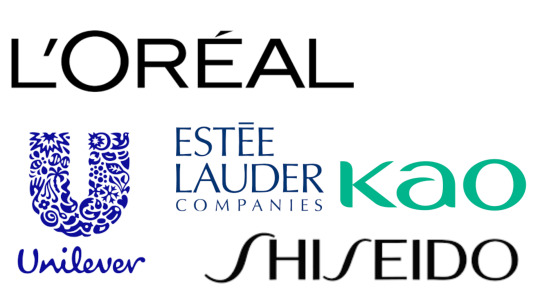
Mass-market: L'Oréal, Procter & Gamble, Unilever, Nivea, Neutrogena.
Premium: Estée Lauder Companies, Shiseido, LVMH, Amorepacific Corporation, Beiersdorf.
Luxury: La Prairie, Clé de Peau Beauté, Guerlain, Crème de la Mer, La Mer.
Natural & organic: The Body Shop, Burt's Bees, Kiehl's, Lush, REN Clean Skincare.
Specialty care: La Roche-Posay, CeraVe, Cetaphil, Eucerin, Paula's Choice.
Analyzing the Competition: A SWOTful Approach
To gain a deeper understanding of the competitive landscape, let's conduct a SWOT analysis of some major players:
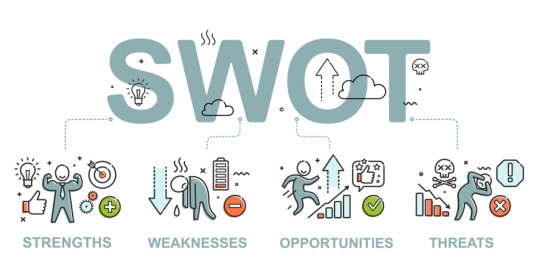
Strengths:
Global giants: Strong brand recognition, extensive product portfolios, robust research and development capabilities, vast distribution networks.
Regional players: Deep understanding of local preferences, agility to adapt to market trends.
Niche players: Focused expertise, ability to cater to specific needs, often known for innovation.
Weaknesses:
Global giants: Potential for bureaucracy, slower innovation cycles, challenges in catering to niche markets.
Regional players: Limited brand awareness outside their region, dependence on specific markets.
Niche players: Limited product offerings, susceptibility to competition from larger players.
Opportunities:
Emerging markets: Rising disposable incomes and growing awareness about skincare in these regions present immense potential.
Personalization: Catering to individual needs and preferences through customized products and services.
Sustainability: Utilizing eco-friendly ingredients and packaging resonates with environmentally conscious consumers.
Digitalization: Leveraging e-commerce platforms, social media marketing, and data-driven insights for targeted reach and engagement.
Threats:
Economic downturns: Can impact consumer spending on non-essential items like skincare products.
Regulatory changes: Stringent regulations on ingredients and labeling can pose challenges.
Competition from substitute products: The rise of athleisure wear and minimalist makeup trends could impact specific skincare segments.
Shifting consumer preferences: Keeping pace with evolving preferences and ethical considerations is crucial.
The Road Ahead: A Segmented Journey to Success
Understanding the skin care market segmentation and analyzing the competitive landscape empowers brands to make informed decisions. By identifying the right segments, tailoring products and messaging accordingly, and capitalizing on emerging trends, brands can navigate the dynamic world of skincare and achieve sustainable growth.
#Skin care market segmentation#Skin care Market#Skin care market Analysis#Skin care market Overview#Skin care market SWOT
0 notes